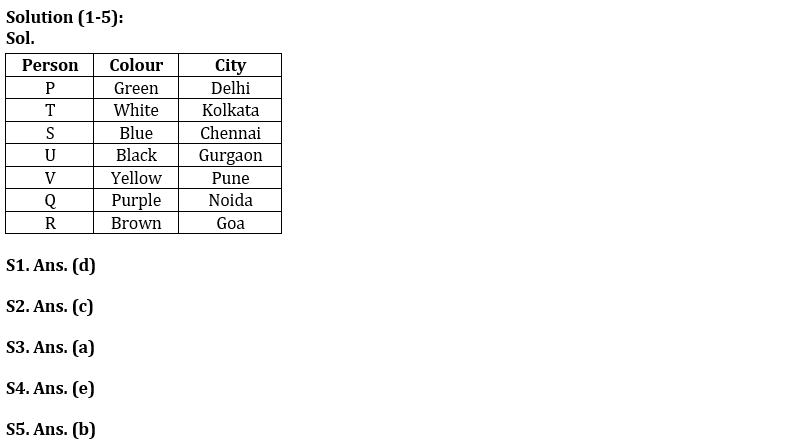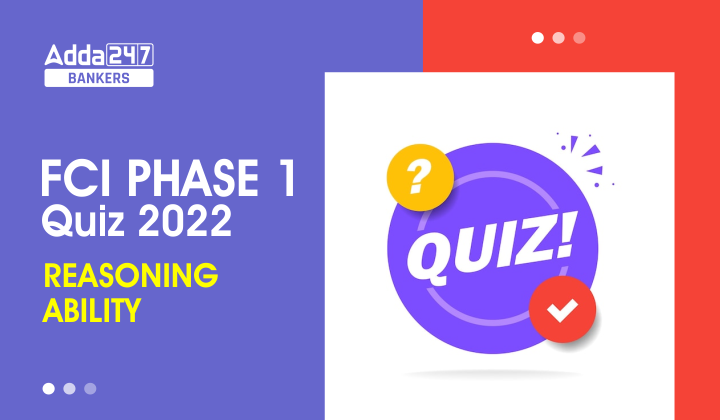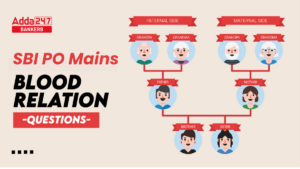Directions (1–5): Study the following information carefully and answer the questions given below.
Seven persons P, Q, R, S, T, U and V like different colours Purple, Green, Yellow, Blue, White, Brown, and Black (not necessarily in same order) also they are from different cities.
One of the persons from Delhi. Neither Q nor U likes yellow and brown colour. T likes white colour and is from Kolkata city. Q is from either Noida or Gurgaon. S doesn’t like purple and yellow colour. The one who is from Gurgaon city doesn’t like purple colour. P likes green colour. The one who likes black colour is not from Chennai city. S is from Chennai city. V is from Pune city. The person who is from Goa city likes brown colour. U is not from Noida city. P is not from Noida and Gurgaon city.
Q1. Who among the following likes Purple Colour?
(a) S
(b) R
(c) U
(d) Q
(e) V
Q2. Who among the following person is from Delhi city?
(a) Q
(b) R
(c) P
(d) S
(e) T
Q3. Which of the following combination is true about U?
(a) Black-Gurgaon
(b) Blue-Delhi
(c) Yellow-Kolkata
(d) Purple-Chennai
(e) Green-Noida
Q4. Which of the following combination is true?
(a) P- Goa
(b) R-Noida
(c) Q- Chennai
(d) U-Delhi
(e) S- Chennai
Q5- Who among the following person is from Goa?
(a) U
(b) R
(c) Q
(d) V
(e) None of these
Directions (6-10): In these questions, relationships between elements are shown in the statements. These statements are followed by two conclusions. Give answer-
Q6. Statements: G≤F=L≤J; J≤K=H
Conclusions: I. H=G II. G<H
(a) If only conclusion I follows.
(b) If only conclusion II follows.
(c) If either conclusion I or conclusion II follows.
(d) If neither conclusion I nor conclusion II follows.
(e) If both conclusions I and II follow.
Q7. Statements: P<R≤S<T>U≥Q>W
Conclusions: I. W>S II. T>P
(a) If only conclusion I follows.
(b) If only conclusion II follows.
(c) If either conclusion I or conclusion II follows.
(d) If neither conclusion I nor conclusion II follows.
(e) If both conclusions I and II follow.
Q8. Statements: T>U≥V≥W; X<Y=W>Z
Conclusions: I. Z>U II. W<T
(a) If only conclusion I follows.
(b) If only conclusion II follows.
(c) If either conclusion I or conclusion II follows.
(d) If neither conclusion I nor conclusion II follows.
(e) If both conclusions I and II follow.
Q9. Statements: K<L<M<N; M<O<P
Conclusions: I. P>K II. N>O
(a) If only conclusion I follows.
(b) If only conclusion II follows.
(c) If either conclusion I or conclusion II follows.
(d) If neither conclusion I nor conclusion II follows.
(e) If both conclusions I and II follow.
Q10. Statements: B<A<C; A>D≤E
Conclusions: I. B≤E II. C>E
(a) If only conclusion I follows.
(b) If only conclusion II follows.
(c) If either conclusion I or conclusion II follows.
(d) If neither conclusion I nor conclusion II follows.
(e) If both conclusions I and II follow.
Directions (11-15): In these questions, relationship between different elements is show in the statements. The statements are followed by conclusions. Study the conclusions based on the given statements and select the appropriate answer:
Q11. Statements: V>J>X<L=F≥R<U<Q≤K
Conclusion I: K>X II: L>R
(a) If only conclusion I follows.
(b) If only conclusion II follows.
(c) If either conclusion I or II follows
(d) If neither conclusion I nor II follows.
(e) If both conclusions I and II follow.
Q12. Statements: D>R=L>C<N≤V>F<L
Conclusion I: D≥C II: V>C
(a) If only conclusion I follows.
(b) If only conclusion II follows.
(c) If either conclusion I or II follows
(d) If neither conclusion I nor II follows.
(e) If both conclusions I and II follow.
Q13. Statements: H≥B=Q>I<J>S>N≤L
Conclusion I: H>Q II: N<J
(a) If only conclusion I follows.
(b) If only conclusion II follows.
(c) If either conclusion I or II follows
(d) If neither conclusion I nor II follows.
(e) If both conclusions I and II follow.
Q14. Statements: C<N=F≥K>E<T≤R≥Y
Conclusion I: K≤N II: R>K
(a) If only conclusion I follows.
(b) If only conclusion II follows.
(c) If either conclusion I or II follows
(d) If neither conclusion I nor II follows.
(e) If both conclusions I and II follow.
Q15. Statements: Y>Z>U>Q≤K≥L=Q
Conclusion I: K>Z II: Q>Y
(a) If only conclusion I follows.
(b) If only conclusion II follows.
(c) If either conclusion I or II follows
(d) If neither conclusion I nor II follows.
(e) If both conclusions I and II follow.
Solutions

S6. Ans. (c)
Sol. I. H=G (False) II. G<H (False)
S7. Ans. (b)
Sol. I. W>S (False) II. T>P (True)
S8. Ans. (b)
Sol. I. Z>U (False) II. W<T (True)
S9. Ans. (a)
Sol. I. P>K (True) II. N>O (False)
S10. Ans. (d)
Sol. I. B≤E (False) II. C>E (False)
S11. Ans. (d)
Sol. I: K>X(False) II: L>R(False)
S12. Ans. (b)
Sol. I: D≥C(False) II: V>C(True)
S13. Ans. (b)
Sol. I: H>Q(False) II: N<J(True)
S14. Ans. (a)
Sol. I: K≤N(True) II: R>K(False)
S15. Ans. (d)
Sol. I: K>Z(False) II: Q>Y(False)





 GA Capsule for SBI Clerk Mains 2025, Dow...
GA Capsule for SBI Clerk Mains 2025, Dow...
 The Hindu Review October 2022: Download ...
The Hindu Review October 2022: Download ...
 Important Blood Relation Questions for S...
Important Blood Relation Questions for S...





